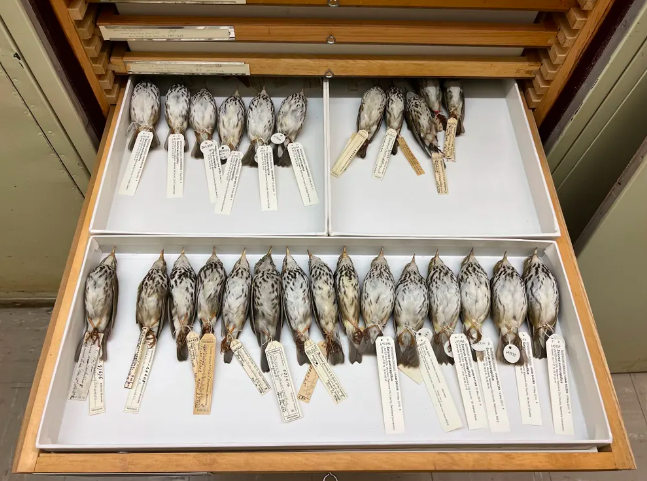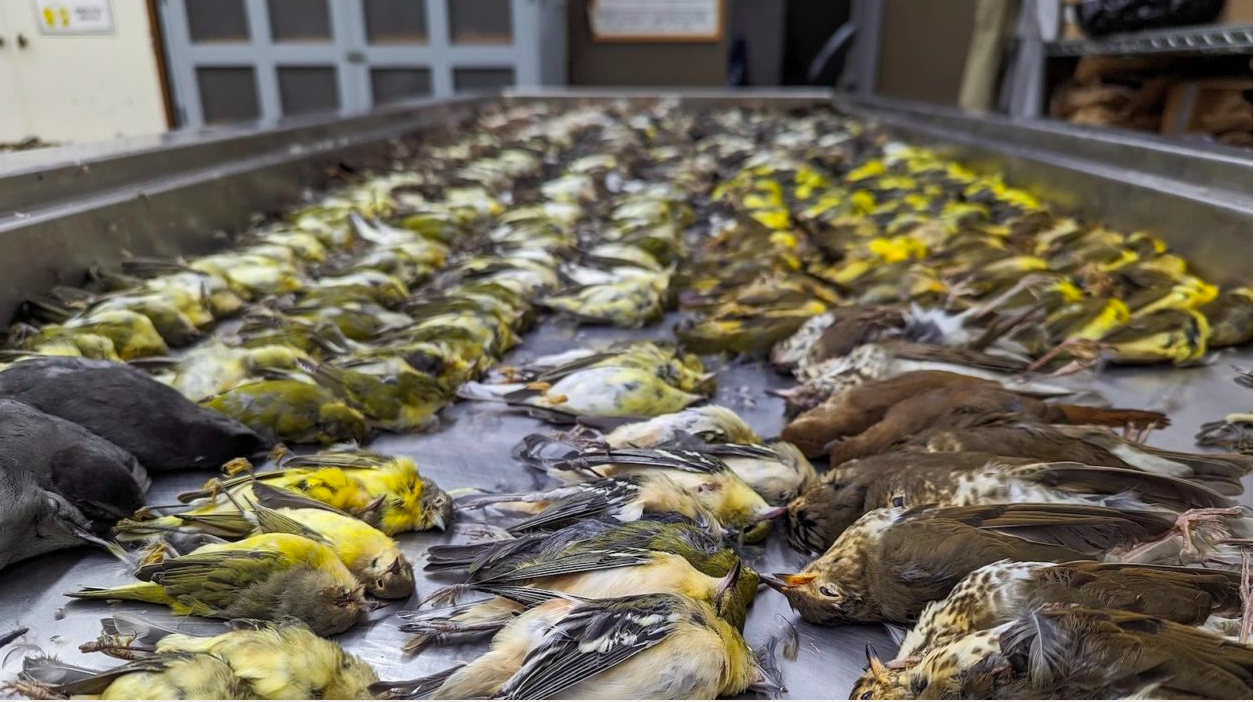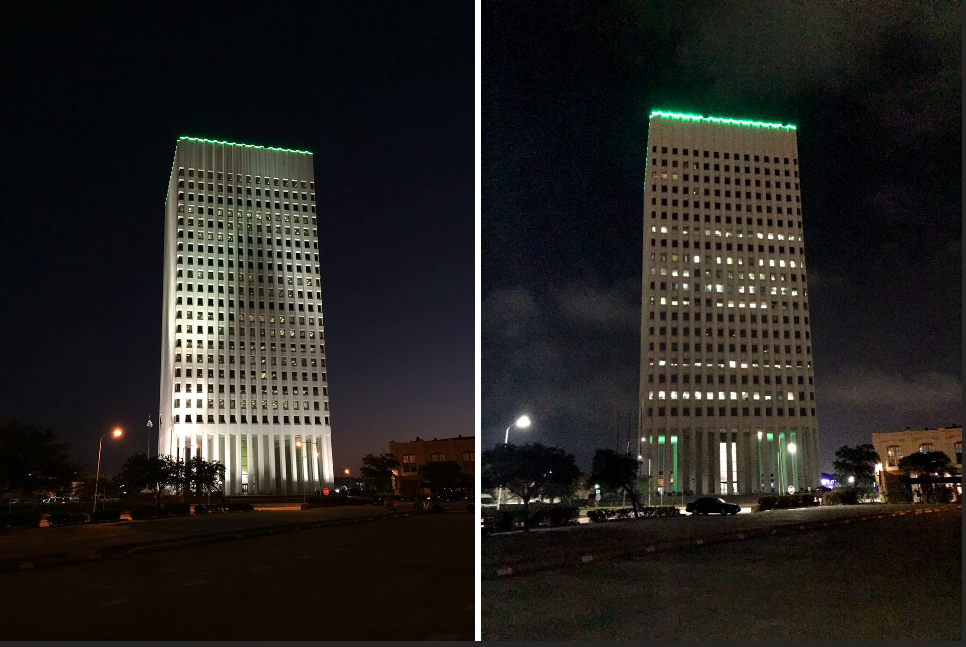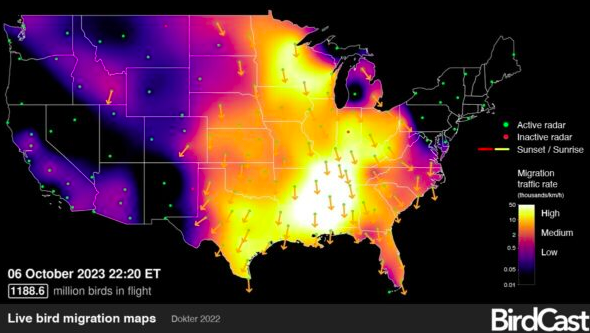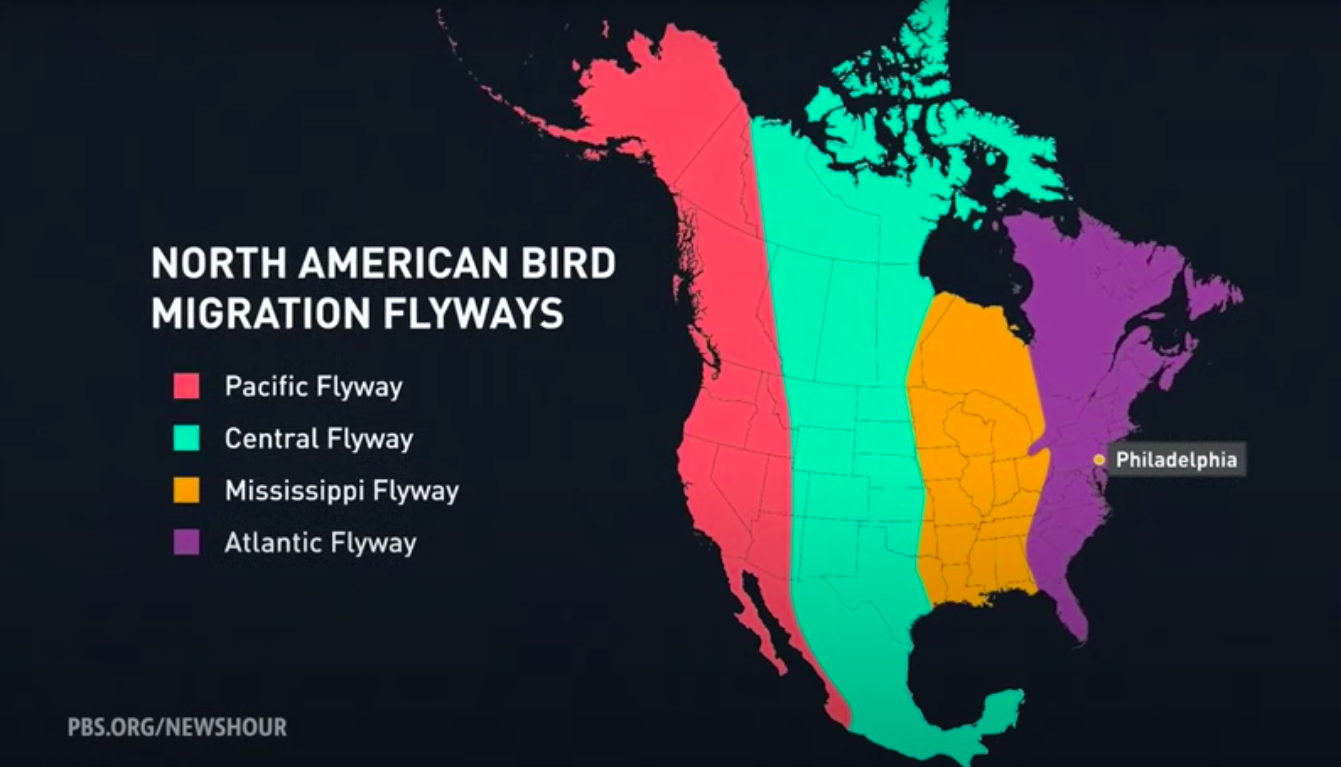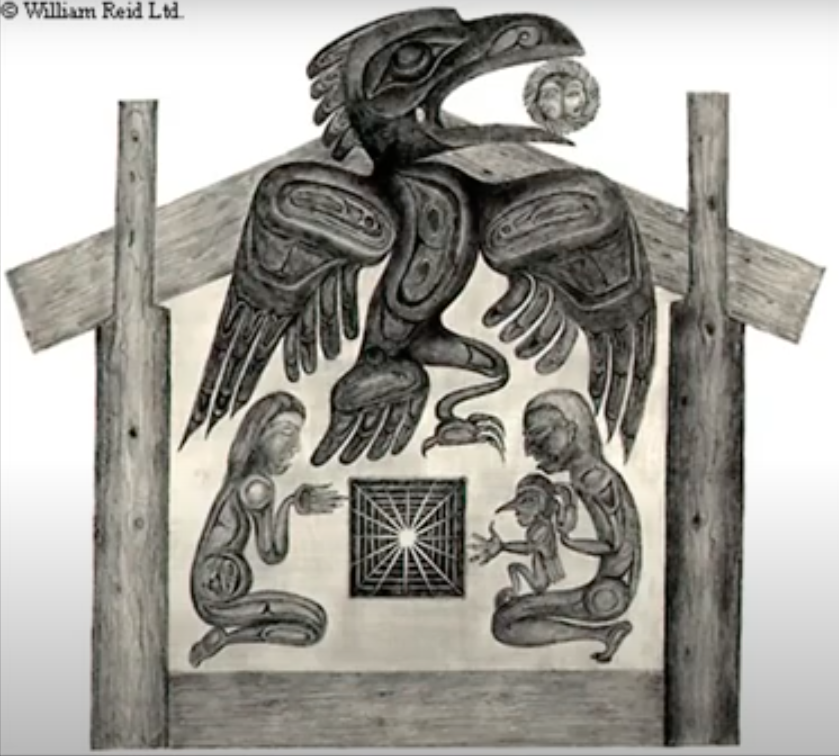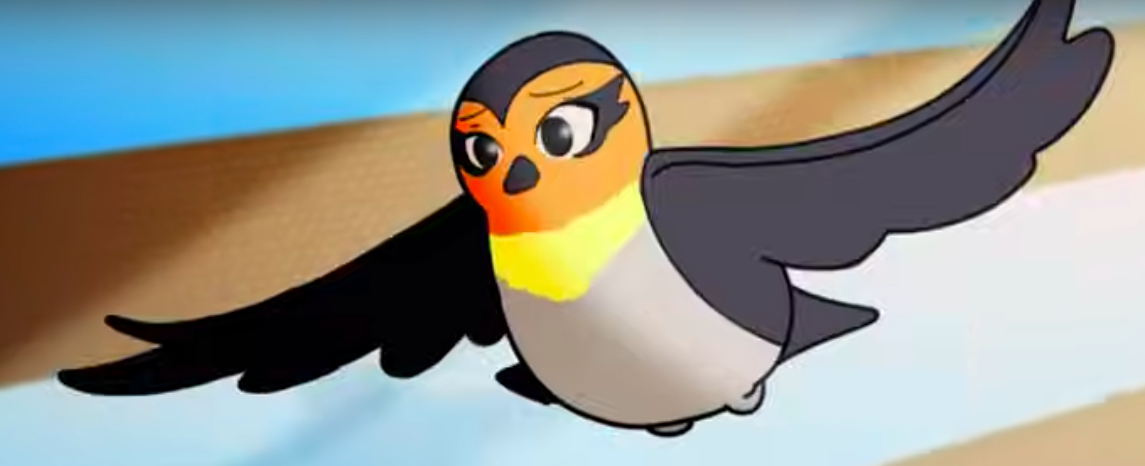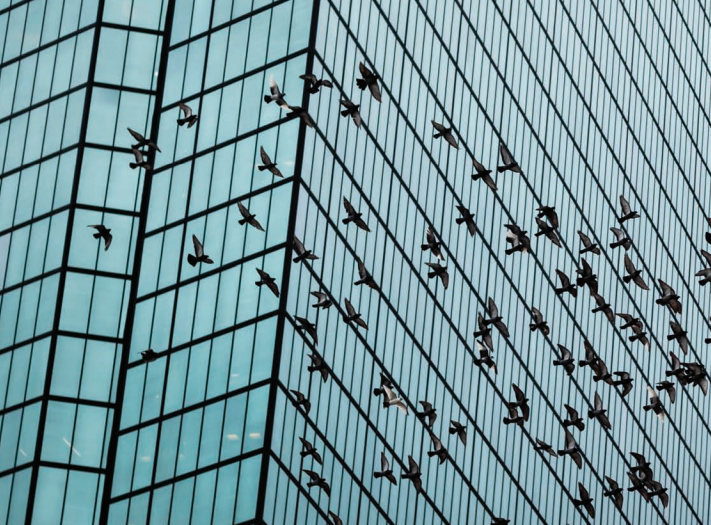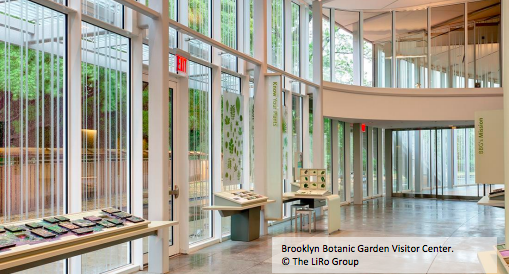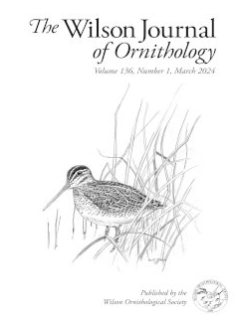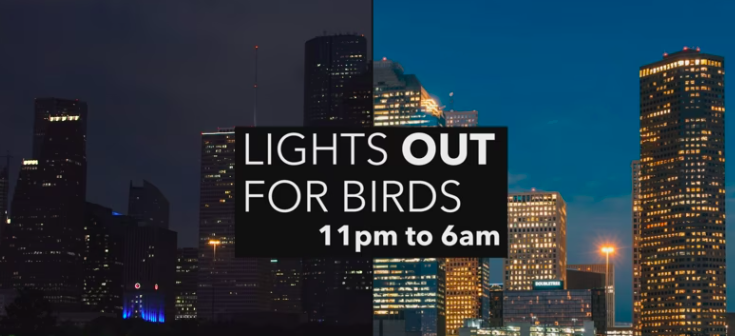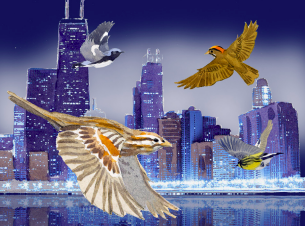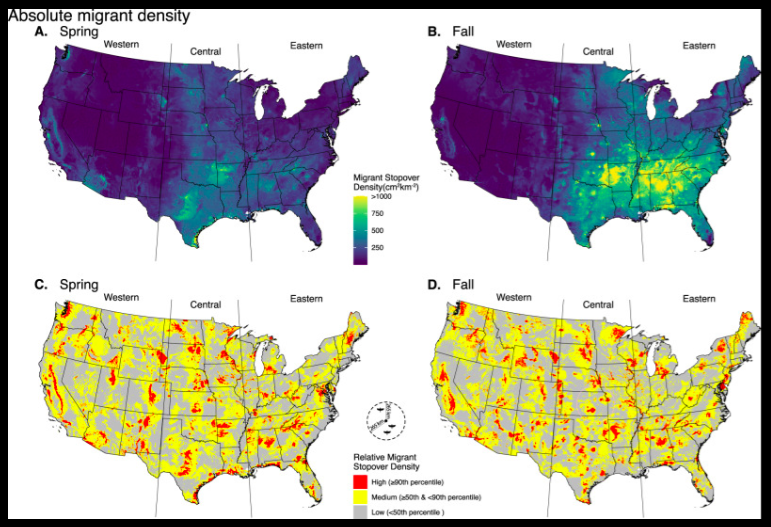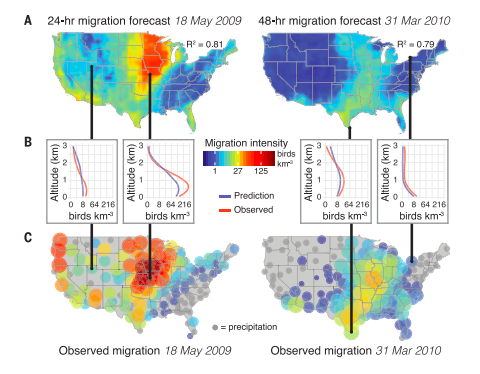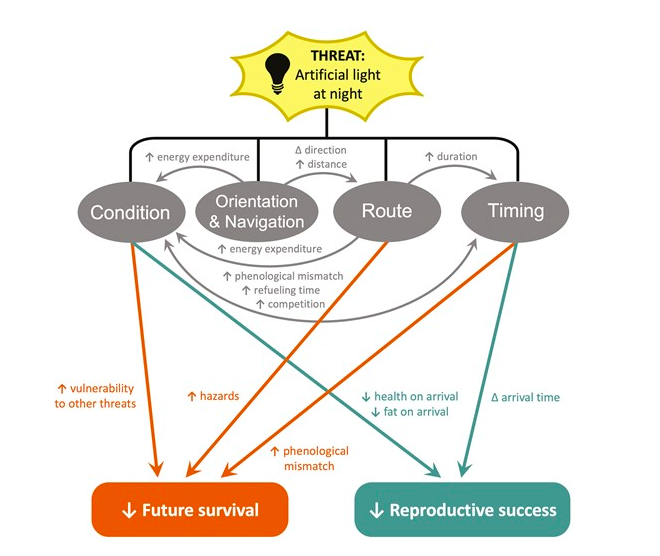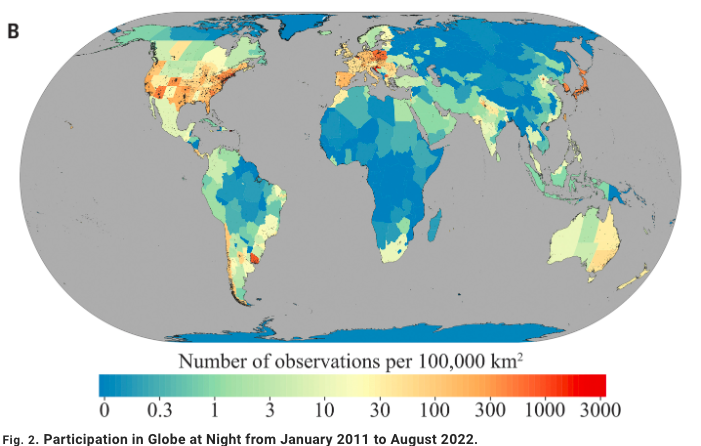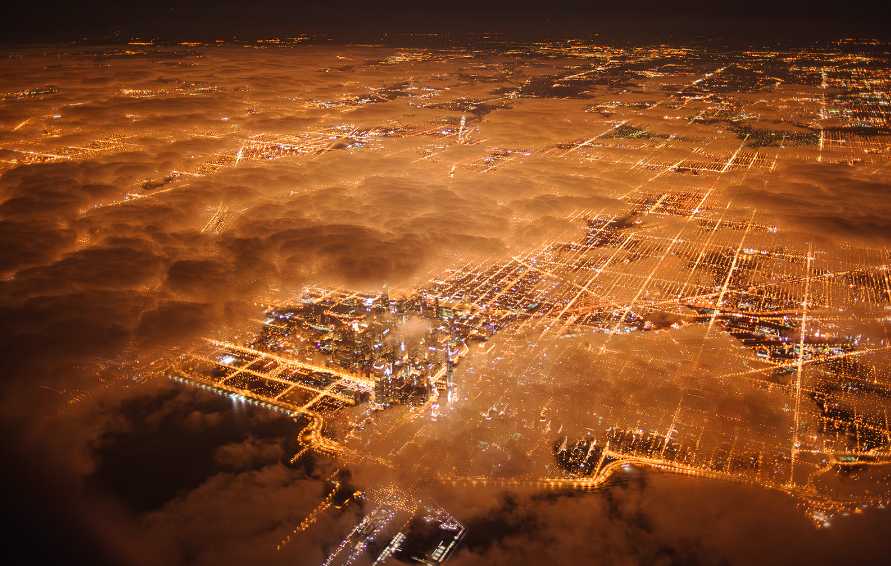Scroll through the page to view all content, or click the linked text to jump directly to News & Articles; Videos; or Scientific Research & Reports.
News & Articles
Turning Off Your Lights Could Save Millions of Birds Each Year from Deadly Building Collisions
The Smithsonian
Artificial lights wash out the stars that guide bird migrations, luring them into a maze of treacherous obstacles and highlighting the need to preserve the dark night sky
As Bird Kills from Buildings Mount, Cities Look for Solutions
Yale Environment360
A massive bird kill in Oct. 2023 highlighted a grim problem: As many as a billion birds die in the U.S. each year by flying into windows and glass walls. Efforts are now underway in cities to dim building lights, make glass more visible, and adopt other bird-friendly practices.
Texas’ skyscrapers are going dark to keep billions of birds safe
BBC
About two billion birds fly through Texas in the spring—and lit-up buildings pose a deadly risk. Turning out the lights at night could save countless fatal collisions.
More Than 1,000 Birds Collided With a Single Chicago Building in One Night
Audubon Magazine
Weather conditions, a pulse of migrating warblers, and bright lights combined to create a wave of bird death across Chicago on a single night in Oct. 2023.
McCormick Place installs bird-safe film to deter migrating birds from hitting its windows
Chicago Sun-Times
This news article is the sequel to the above—and an example of positive progress: The same Chicago building that proved fatal for more than 1,000 birds in Oct. 2023 is getting a bird-safe upgrade. Following years of pressure from bird advocates, McCormick Place Lakeside Center’s glass facade is finally being covered with a film designed to deter birds from flying into the windows.
Lights Out for the Texas Skyscraper That Caused Hundreds of Songbird Deaths
Audubon Magazine
With input from local wildlife groups and birders, the owners shut down the lights and turned up the dialogue on bird-friendly practices.
The first billion-plus-bird night: Oct. 6-7, 2023
Birdcast
Check out the migration radar for the first billion-plus-bird night that BirdCast ever recorded.
Videos
How Philadelphians are working to protect birds from deadly window collisions
PBS NewsHour
Every year in the United States, as many as a billion birds die while migrating. These birds aren’t being killed by climate change or toxic substances in the air or water, but by collisions with glass.
Humans and The Night Sky Our Lost Heritage
Menunkatuck Audubon
In this Zoom presentation, Craig Repasz—co-chair of Lights Out Connecticut and member of the Menunkatuck Audubon Society—explores the human connection to the cosmos, focusing on mythologies, human health, and wellbeing.
Lights Out for Birds: Animated Short
Cornell lab of ornithology
Accompany a tiny songbird as it succumbs to the allure of vibrant city lights, unaware of the perils it encounters—hazards that are typical for migratory birds maneuvering through urban environments.
Scientific Research & Reports
Building Safer Cities for Birds
Yale Law School & American Bird Conservancy
Cities can—and are—leading the way on
bird-friendly building policies. This report considers how public policies can accelerate the adoption of bird-friendly buildings at scale in the U.S.
Bird-Friendly Building
Lights out Connecticut
Window collisions are a major cause of bird mortality in the United States. New bird-friendly building technologies are effective and affordable, providing important co-benefits for human health,
energy efficiency, ecological resilience, and savings.
Evidence, consequences, and angle of strike of bird–window collisions
Wilson Journal of Ornithology
This research found annual mortality for birds may be as high as 1.92 billion–5.19 billion in the U.S. alone, with potentially billions more birds killed worldwide.
Science to Action
Birdcast
Every spring and fall, billions of birds migrate through the U.S., mostly under the cover of darkness. This mass movement of birds must contend with a dramatically increasing but still largely unrecognized threat: light pollution.
The effects of light pollution on migratory animal behavior
Trends in Ecology & Evolution
Research across spatial scales reveals the multifaceted effects of artificial light
on migratory species. These threats extend beyond species that are active at night—broadening the scope of this threat. Emerging tools for measuring light pollution and its impacts—
as well as ecological forecasting techniques—present new pathways for conservation.
Artificial light at night is a top predictor of bird migration stopover density
Nature Communications
Researchers identified sky glow as a consistent predictor of high numbers of bird migration stopovers across the U.S. This demonstrates an expanding threat to avian migrants: Illuminated areas, such as towns and cities, may act as ecological traps that increase the mortality of birds during migration.
A continental system for forecasting bird migration
Science magazine
Billions of animals cross the globe each year during seasonal migrations, but efforts to monitor them are hampered by the unpredictability of their movements. These researchers developed a bird migration forecast system at a continental scale that can help reduce collisions with buildings, airplanes, and wind turbines; inform monitoring efforts, and engage the public.
More than mortality: Consequences of human activity on migrating birds extend beyond direct mortality
Ornithological applications
Birds must contend with an array of anthropogenic threats during their migratory journeys. Many migrants are killed due to encounters with artificial light, introduced species, pollutants, and other anthropogenic hazards, while survivors of these encounters can suffer longer-lasting negative effects
Citizen scientists report global rapid reductions in the visibility of stars from 2011 to 2022
Science magazine
The night sky is rapidly getting brighter. Artificial lighting that escapes into the sky causes it to glow, preventing humans and animals from seeing the stars.
High-intensity urban light installation dramatically alters nocturnal bird migration
Proceedings of the national academy of sciences
Researchers found an iconic urban light installation dramatically altered multiple behaviors of nocturnally migrating birds—but these effects disappeared when lights were extinguished. They recommended selective removal of light pollution during nights with substantial bird migration to mitigate negative effects on birds, in particular collisions with lighted structures.
Losing the darkness
Science magazine
This special issue of “Science” examines the effects of light pollution on the natural world, human health, and the night sky. It discusses how the level of light pollution can be measured and what could be done about it. Read the intro or use the below links read the articles.
